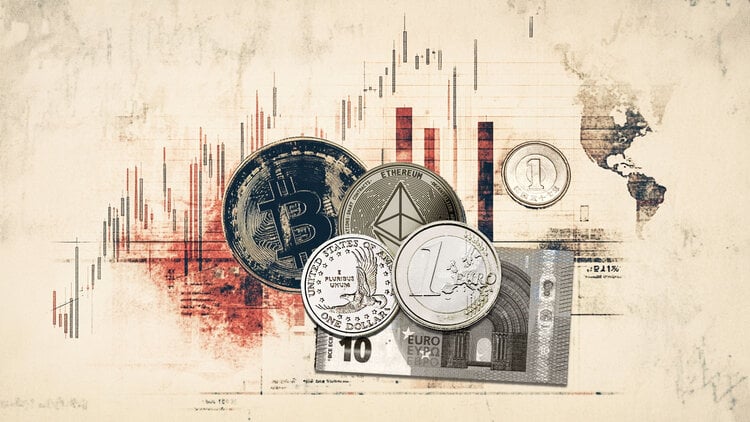- The USD/MXN rises to two days at 19.37.
- The US dollar advances to the Mexican peso but yields land against its main counterparts.
- The retail sales of Mexico record their largest increase in 20 months.
- USA reduces tariffs on cars imported from Mexico to 15%.
The USD/MXN goes up this Wednesday after three consecutive days of descents. The torque, which yesterday reached its lowest level in seven months in 19.23, has been quoted today between that level and a maximum of two days in 19.37.
At the time of writing, the USD/MXN is quoted about 19.34, winning 0.55% daily.
The US dollar remains weakened after the reduction of Moody’s and doubts about the approval of Trump’s fiscal draft project
The American dollar index (DXY) has fallen today to a minimum of two weeks in 99.40, and although it has weakened in front of its main rivals, such as the euro, the pound and the YEN, the green ticket is strengthening against its counterparts of Latin America.
The bill “One Big Beautiful Bill” by US President Donald Trump fails to convince US legislators, with dissidents within the Republican party itself. The law aims to extend the 2017 tax and job cuts law and introduce new tax relief measures. The proposal generates many doubts because it could continue expanding the country’s deficit, something that alarm after the Moody’s agency reduced the rating of the US debt to AA1 on Friday.
Without relevant data on this day, the focus in the next few minutes will be in the speeches of the members of the Fed, Thomas Barkin and Michelle Bowman.
Retail sales of Mexico rise to maximum of 22 months
The retail sales of Mexico grew by 4.3% year -on -year in March after falling 1.1% in February, according to the National Institute of Geography and Statistics (INEGI). This is the largest increase registered by the indicator since July 2023. The figure improves market expectations, which provided for an increase of 2.2%.
At the intermensual level, the indicator has risen 0.5% in March, after rising 0.2% the previous month, exceeding the estimated 0.1% increase.
Besides, The United States and Mexico agreed yesterday that tariffs were reduced to cars from Mexico from 25% to 15%provided they comply with the rules of the T-MEC treaty.
Both news could have driven Mexican weight upwards, but doubts about US economy are favoring the dollar against LATAM currencies.
USD/MXN Price levels
In an hour graphics, the relative force index (RSI) of 14 is above 50 but points to a short -term down correction, while in broader graphics, the bearish bias is maintained despite the rebound today.
Upwards, the first resistance is in the mobile average of 100 periods in one -hour graph at 19.38. Above the focus is on the roof last week at 19.66. A rupture of this level would point to the maximum of May registered on day 6 in 19.78.
Down, the key support is in 19.23, minimum of yesterday and Hoym and all 2025. A break of this level would point around 19.11/19.06, soils of October and September of 2024, respectively. Below, the round level of 19.00 could contain the descent.
Mexican weight FAQS
The Mexican weight (MXN) is the most commercialized currency among its Latin American peers. Its value is widely determined by the performance of the Mexican economy, the country’s central bank policy, the amount of foreign investment in the country and even remittance levels sent by Mexicans living abroad, particularly in the United States. Geopolitical trends can also affect MXN: for example, the Nearshoring process (or the decision of some companies to relocate the manufacturing capacity and supply chains closer to their countries of origin) is also considered a catalyst for the Mexican currency, since the country is considered a key manufacturing center in the American continent. Another catalyst for MXN is oil prices, since Mexico is a key exporter of the raw material.
The main objective of the Central Bank of Mexico, also known as Banxico, is to maintain inflation at low and stable levels (in or close to its 3%target, the midpoint of a tolerance band between 2%and 4%). To do this, the bank establishes an adequate level of interest rates. When inflation is too high, Banxico will try to control it by raising interest rates, which makes the indebtedness of homes and companies more cooling, thus cooling the demand and the economy in general. The highest interest rates are generally positive for Mexican weight (MXN), since they lead to higher yields, which makes the country a more attractive place for investors. On the contrary, lower interest rates tend to weaken the MXN.
The publication of macroeconomic data is key to evaluating the state of the economy and can have an impact on the valuation of the Mexican weight (MXN). A strong Mexican economy, based on high economic growth, low unemployment and high confidence is good for MXN. Not only attracts more foreign investment, but it can encourage the Bank of Mexico (Banxico) to increase interest rates, particularly if this fortress is accompanied by high inflation. However, if the economic data is weak, the MXN is likely to depreciate.
As an emerging market currency, the Mexican weight (MXN) tends to rise for periods of risk, or when investors perceive that the general market risks are low and, therefore, are eager to participate in investments that carry a higher risk. On the contrary, the MXN tends to weaken at times of market turbulence or economic uncertainty, since investors tend to sell higher risk assets and flee to the most stable safe shelters.
Source: Fx Street
I am Joshua Winder, a senior-level journalist and editor at World Stock Market. I specialize in covering news related to the stock market and economic trends. With more than 8 years of experience in this field, I have become an expert in financial reporting.







